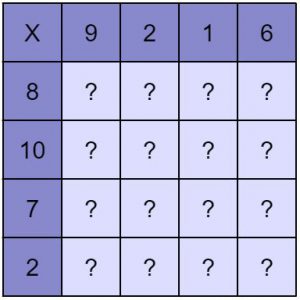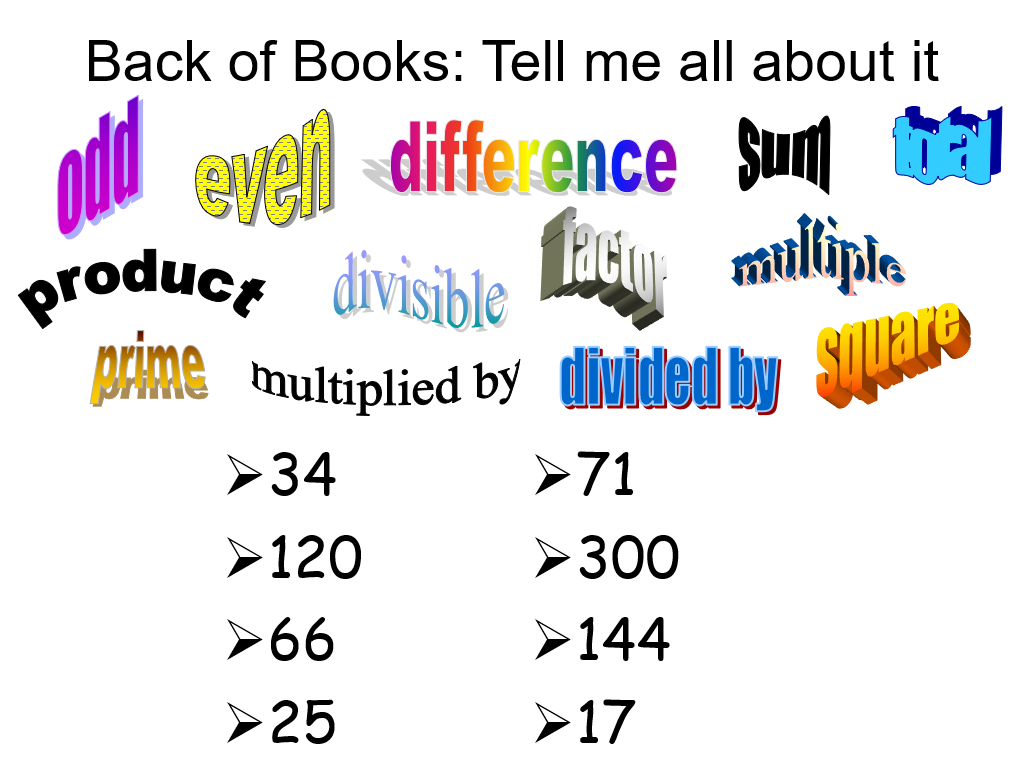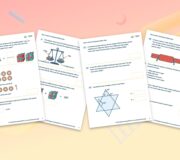16 Fun Back To School Maths Activities (KS2) to Beat the Summer Learning Loss
Fun back to school maths activities for KS2 are a great way to start your term the way you want it to go on, even in the face of any summer learning loss…
Sometimes referred to as “the summer slide”, brain drain, whether over summer or other holidays, is the loss of knowledge and skills which were acquired during the previous school term or year.
Primary maths seems to be the subject which is hit the hardest, with industry experts suggesting several months of maths skills are lost over the summer.
And this year, it’s not just 6 weeks of the school holidays that children have been out of school. While you’re using diagnostic assessment to figure out the learning gaps from this time – and many children will surprise you – take a break to try out some of these fun maths activities.
They are designed to remind you and your pupils of the joy and fun that maths can bring.
Back to school and back to maths lessons
Your new pupils’ retention of last year’s maths may not be as strong you hoped but it will return. We know so much more now than we used to about how children’s memory works and much of what they used to know will return – it just needs some careful recall. There is hope!
To find out more about how best to manage cognitive load and your pupils’ working memory at the start of term, we recommend you read this article first on the summer slide and why children forget from curriculum expert, Clare Sealy.
Here at Third Space Learning, we encounter this even just week to week. Our approach is make sure that each AI tutoring session with Skye, the AI maths tutor, not only covers new content, but encourages pupils to recall previously learned content too.

Only the best KS2 maths activities have made the grade
To get you and your pupils back into the swing for their maths lessons, we’ve trawled the internet to compile a list of the top 16 (coincidentally happens to be a square number!) engaging, fun and effective back to school maths activities to shake up your pupils and clear out those cognitive cobwebs.
We’ve tried to ensure a good balance of mental maths activities as well as problem solving and reasoning.

Meet Skye, the voice-based AI tutor making maths success possible for every student.
Built by teachers and maths experts, Skye uses the same pedagogy, curriculum and lesson structure as our traditional tutoring.
But, with more flexibility and a lower cost, schools can scale online maths tutoring to support every student who needs it.
Watch Skye in actionFree fun maths activities for KS2
When we first created our list of fun back to school maths activities, we had Year 6 in mind but as we’ve added to the list there are now lots of ideas for you to use for back to school maths in Year 3, Year 4, or Year 5.
There are even a few, such as maths bingo, which can be easily adapted for Year 2 if you’re looking for KS1 maths activities.
In fact, all of these maths activities are suitable for any day of the week and any stage of term – you might like to try a few as maths starters. Right now, at the start of term, we recommend you use them to help pupils regain their confidence in maths, develop depth and remember how to justify their reasoning.
These activities are teacher approved and fun, at a time when fun is what you need to settle your class.
As an added bonus we’ve also got 4 Free Back to School Maths Quizzes (for Years 3, 4, 5, 6) for you to download and help diagnose your pupils principal gaps in maths.
- 1. How Many Squares and How Many Triangles?
- 2. Here’s The Answer, What’s The Question?
- 3. Education Estimation
- 4. BINGO!
- 5. Grid Multiplication
- 6. Countdown
- 7. Coded Hundred Square
- 8. Flash Maths Number Grids
- 9. Tell Me About It
- 10. Odd One Out
- 11. Guess My…
- 12. Find 5 Different Ways To Make 24
- 13. Fizz Buzz Game
- 14. Macaroni – Proportion Starter
- 15. Fractangle
- 16. Place Value Charts
1. How Many Squares and How Many Triangles?
KS2 maths activity for Year 3, Year 4, Year 5.
Pupils use a quick online maths activity to find as many squares and triangles in the diagram as possible, requiring them to think outside the square. Or triangle!

| Time: | 10 – 20 mins |
| Why we chose it: | Great for a starter on the first day back. Pupils love counting the objects when you press the play button! |
| Our suggestion: | Make it into a competition – closest person wins a prize! Get pupils to commit to an answer – back of books. |
| How to support: | Ask them to work in pairs. Or you could ask of an example of another square other than the individual ones. |
| How to extend: | When asking for results, ask pupils to think of an efficient way to record the data. |
| Link to activity: | How Many Squares? How Many Triangles? |
| Original source: | Transum.org |
2. Here’s The Answer, What’s The Question?
KS2 maths activity for Year 3 – Year 6 – just adapt the calculation you give.
Give pupils a complete calculation and ask them to write their own word problem.

| Time: | 10 – 15 mins |
| Why we chose it: | It’s open ended! Just think of the responses, some pupils may even surprise you! |
| Our Suggestions: | Ask pupils to copy the calculations in their books. Perhaps you could ask them why you have set your workings out in that way? |
| How to support: | Ask pupils to come up with an example in pairs first so that they are having to verbalise their reasoning with one another. Then ask them to come up with another example all by themselves. |
| How to extend: | Make it a 2 or multiple step calculation. |
Years 3 to 6 Back to School Diagnostic Maths Quizzes (4 Quizzes)
4 quizzes - one for each year group to diagnose pupils maths gaps - complete with mark scheme and gaps analysis
Download Free Now!3. Education Estimation
Fun KS2 maths activity for Year 3, Year 4, Year 5, Year 6
Estimate the number of pens/pencils/books (and glue sticks?!) etc needed for the class/year group/whole school in this fun and informative activity.

| Time: | 20 – 25 minutes |
| Why we chose it: | Estimation is a key skill to practise and a nice way to link Maths to real life context. Plus, maybe they will be more respectful with your stationery? |
| Our Suggestion: | If you are brave enough, get out a whole box of pencils at the start so that (as a whole class) pupils can manipulate/visualise how many would be need. Again, only if you’re brave. |
| How to support: | Use simpler numbers such as smaller containers, larger items or provide a comparison first. e.g. Here’s one cup and it has ten pencils in. Now how many do you think are in this cup? |
| How to extend: | Add in a cost per item. “What if I had 10, 20, 15 of these pots/packs?” “What if I had twice as many?” “What if I gave a third of them away?” |
4. BINGO!
Back to school maths activity for Year 2 to Year 6.
Get pupils to chose from a list of numbers on the board (or they can make them up). Then display a sequence of prepared numbers on the board and pupils cross them off on their grid. When pupils cross off all of their numbers they shout “BINGO!”

| Time: | 15-20 mins |
| Why we chose it: | You can do so much with them! Easiest way is to get the pupils to draw their own bingo grids on their mini whiteboards and fill in numbers e.g. “Choose 9 of the numbers from the list on the board.” or “Write down 9 multiples of 10 between 100 and 500.” |
| Our suggestion: | Do not reinvent the wheel – there are loads of bingo cards out there for you to use for free! Also, write down the answers to the questions (in order of course) before and this makes it easier to check. |
| How to support: | Create cards with easier numbers. If in a mixed ability class, try to use a variety of questions, some easier than others. |
| How to extend: | Create cards whereby the numbers are calculations/times tables (eg instead of 64 you could put 8 x 8). |
| Link to activity: | TES has a plethora of them (you will need to sign in/create an account.) |
| Original source: | TES resources |
5. Grid Multiplication
Year 3 and Year 4 maths activity (lower KS2).
Pupils have to use their times table knowledge to find the missing numbers.

| Time: | 10 – 15 mins |
| Why we chose it: | Great for practising times tables and looking at the inverse and how they link with one another. |
| Our Suggestion: | Do one as an example with the whole class. Then get pupils to create one for their friends to answer. They can do this by creating one on their whiteboards then just rubbing out some of the answers. This is a nice way to get pupils practising multiplication. They obviously will make it as hard as they can for their classmate. What are friends for, eh? |
| How to support: | Pair work or possibly a times table grid. |
| How to extend: | Create a grid that requires a two step solution like the example above. |
| Link to activity: | Flash Maths Grid Multiplication |
| Original source: | Flashmaths.co.uk |
6. Countdown
Year 3 to Year 6 KS2 maths activity.
Choose six playing cards (royals count for 10), you are then given a target. You have to make that target with the cards you have using the four operations. You can only use a card once. You do not have to use all cards.

| Time: | 10-20 mins |
| Why we chose it: | It requires pupils to use the four operations and they really see it as a great challenge! Let’s play countdown! |
| Our Suggestion: | Two from the top and four from the bottom is the easiest. |
| How to support: | Give them an extension of time (say another 10 seconds?). Or ask a pupil what they would do first so that those struggling can have a start in the right direction. You could also provide struggling pupils with list of a key number facts e.g. 2 x 75 = 150. |
| How to extend: | Four from the top and two from the bottom of course! |
| Link to activity: | Nrich Coundown activity (plus many more great Maths activities to enrich learning) |
| Original source: | Nrich.maths.org |
Looking for fun games and activities to boost pupils’ learning?
We’ve got several articles sharing teacher approved maths activities and fun maths games, including KS2 maths games, KS1 maths games and KS3 maths games for all maths topics and a set of 35 times tables games and multiplication games you’ll want to bookmark whichever year group you teach!
7. Coded Hundred Square
Maths activity for Year 5 and Year 6 – Upper Key Stage 2.
This 100 square is written in code. It starts with 1 and ends with 100. Can your pupils build it up? Visit the link below for a full size version.

| Time: | 20-30 mins |
| Why we chose it: | One of the longer ones in time we know, but this exercise can be so powerful. The activity allows pupils to see links between the place values of units, tens and hundreds. |
| Our Suggestion: | Print it out and get pupils to work in pairs while they cut out the parts so that pupils can manipulate and talk through their reasoning with their partner. |
| How to support: | Give pupils a 100 square so they can visually make links |
| How to extend: | Ask pupils to make their own versions with their own code |
| Link to activity: | Coded Hundred Square |
| Original source: | Nrich.maths.org |
8. Flash Maths Number Grids
Year 5 and Year 6 maths activity (Upper KS2).
Pupils have to fill the grid with numbers following the rules they are given.

| Time: | 10 – 15 mins |
| Why we chose it: | A great starter that develops pupils problem solving skills whilst revising the special types of number. |
| Our Suggestion: | Have a quick run through of the types of numbers before pupils attempt the grid. Perhaps you could have a glossary on a table for pupils to share? |
| How to support: | Reduce the number of grids to two by two. |
| How to extend: | Increase the number of grids to four by four. |
| Link to activity: | Flash Maths Number Grids |
| Original source: | flashmaths.co.uk |
9. Tell Me About It
Year 5 and Year 6 (Upper KS2) maths activity.
Pupils are required to put their own definitions to the terms and the numbers.

| Time: | 10 – 15 mins |
| Why we chose it: | It’s a great way of getting literacy in Maths! |
| Our Suggestion: | Before they write it down, get pupils to tell each other in pairs what they think each means. |
| How to support: | This could be done as a matching activity whereby pupils are given the terms/numbers and then they have to match it up to the relevant description. |
| How to extend: | Include harder numbers. Possibly a number that matches multiple terms, for example 64. |
| Link to activity: | Credit for this goes to samang25 and it can be found on the TES website. |
| Original source: | TES resources |
10. Odd One Out
Year 3 to Year 6 maths activity (KS2) – easy to adapt.
Pupils are required to spot the odd one out. You could do it so there is only one odd one. The example here has two and is based on place value but you can use it for almost anything.

| Time: | 5 – 15 mins (depending on how many you do!) |
| Why we chose it: | This starter is great for gauging how much a pupil has retained about a topic. And do you know the best thing about this? There is no wrong answer as long as a pupil can justify their answer! |
| Our Suggestion: | Do this activity as a class as the conversation could just take off! |
| How to support: | Have a combination where there is no wrong answer (like the one above). |
| How to extend: | Design a combination where 3 (or 4) are the same and only one is the odd one out. Great for simplest form! |
11. Guess My…
Upper KS2 maths activity for Year 5 and Year 6.
Teacher to think of a number/shape/angle etc. Then, pupils are to ask questions to the teacher where the answer can only be yes or no. Challenge pupils to guess within a set number of questions.

| Time: | 5 – 15 mins |
| Why we chose it: | It requires pupils to be thinking about the questions they are asking. They are also required to use key terminology and remember previous answers too! |
| Our Suggestion: | Do not break the rules! Responses like ‘kind of’, ‘hmmm’ and ‘’nearly’ are not yes or no responses! |
| How to support: | Increase the number of questions pupils can have. |
| How to extend: | Decrease the number of questions pupils can have. |
12. Find 5 Different Ways To Make 24
Year 4, Year 5, Year 6 maths activity (KS2).
Make 24 in 5 different ways whereby all four of the operations are used.

| Time: | 15 – 20 mins |
| Why we chose it: | Order of operations, number fluency, problem solving, need we say more? |
| Our Suggestion: | Do an example first. Perhaps include one with a misconception that does not follow the order of operations. |
| How to support: | You could decrease it to three ways to make 24. |
| How to extend: | Include variations such as square numbers, square roots, only odd/even numbers must be used or even must use all different numbers in each equations. |
13. Fizz Buzz Game
Year 3 and Year 4 fun maths activity KS2.
Decide on the multiplication table you’re going to chant. In turns, pupils list the multiples in order, but are not allowed to say numbers that match with a rule (e.g. numbers that are divisible by 2). Instead, they have to replace that number with a word that you have come up with.

| Time: | 5 – 10 mins |
| Why we chose it: | It gets them on their feet, improves their times tables and we bet you will end up in fits of giggles! |
| Our Suggestion: | Go crazy with the word! We came up with pickle, brolly and trifle! |
| How to support: | Make the rule easier. |
| How to extend: | Have two rules to keep them on their toes! |
14. Macaroni – Proportion Starter
Year 6 maths activity.
Pupils are given a picture like the one above (or you can use real macaroni) and then a set of questions whereby you have to find the value of each piece of Macaroni.

| Time: | 20 – 25 mins |
| Why we chose it: | It involves bar modelling! |
| Our Suggestion: | Do not do this one right before lunchtime. |
| How to support: | Make numbers and problems easier |
| How to extend: | Make the numbers harder and include two step problems, e.g. if Q=6, what does K equal? |
| Link to activity: | Credit for this goes to BW_2012 and can be found on TES |
| Original source: | TES resources |
15. Fractangle
Year 4 or Year 5 KS2 maths activity.
The shapes below are shown on the board. Pupils have to figure out what proportion or fraction is shaded.

| Time: | 5 – 10 mins |
| Why we chose it: | It requires pupils to think outside the box. Also, watch their faces as the answer is revealed. |
| Our Suggestion: | Give it time. They may not get it at first but then there will be an ‘oohh!’ and then watch that spread like wildfire! |
| How to support: | Pupils could work in pairs. |
| How to extend: | How much of the shape is not shaded. Can you write an equation for this? Also, create your own fractangle! |
| Link to activity: | Fractangle |
| Original source: | Transum.org |
16. Place Value Charts
KS1 and KS2 maths activity – Year 1 to Year 6.
Pupils practise making a number from a number that is represented either by digits or by words.

| Time: | 10 – 20 mins |
| Why we chose it: | If you are lucky enough to have tablets, then it can be more interactive! |
| Our Suggestion: | Get the pupils to speak out the number before they answer the questions. |
| How to support: | You can select easier place value option. |
| How to extend: | You can set it so it can go into tenths and hundredths. You could ask pupils to round answers to the nearest whole number/tenth. |
| Link to activity: | Place Value Charts |
| Original source: | topmarks.co.uk |
We hope you liked these 16 back to school fun KS2 maths activities !
Looking for more? We’ve got lots more maths activities here for you, including 19 fun maths activities for the end of term, our favourite fun maths lessons and of course some fantastic Christmas maths activities when you’re ready for them.
Do let us know how you got on @thirdspacetweet and don’t forget to download our free diagnostic quizzes for each year of Key Stage 2. They include an answer sheet showing misconceptions that is easy to mark during the lessons.
DO YOU HAVE STUDENTS WHO NEED MORE SUPPORT IN MATHS?
Skye – our AI maths tutor built by teachers – gives students personalised one-to-one lessons that address learning gaps and build confidence.
Since 2013 we’ve taught over 2 million hours of maths lessons to more than 170,000 students to help them become fluent, able mathematicians.
Explore our AI maths tutoring or find out about primary school tuition for your school.







